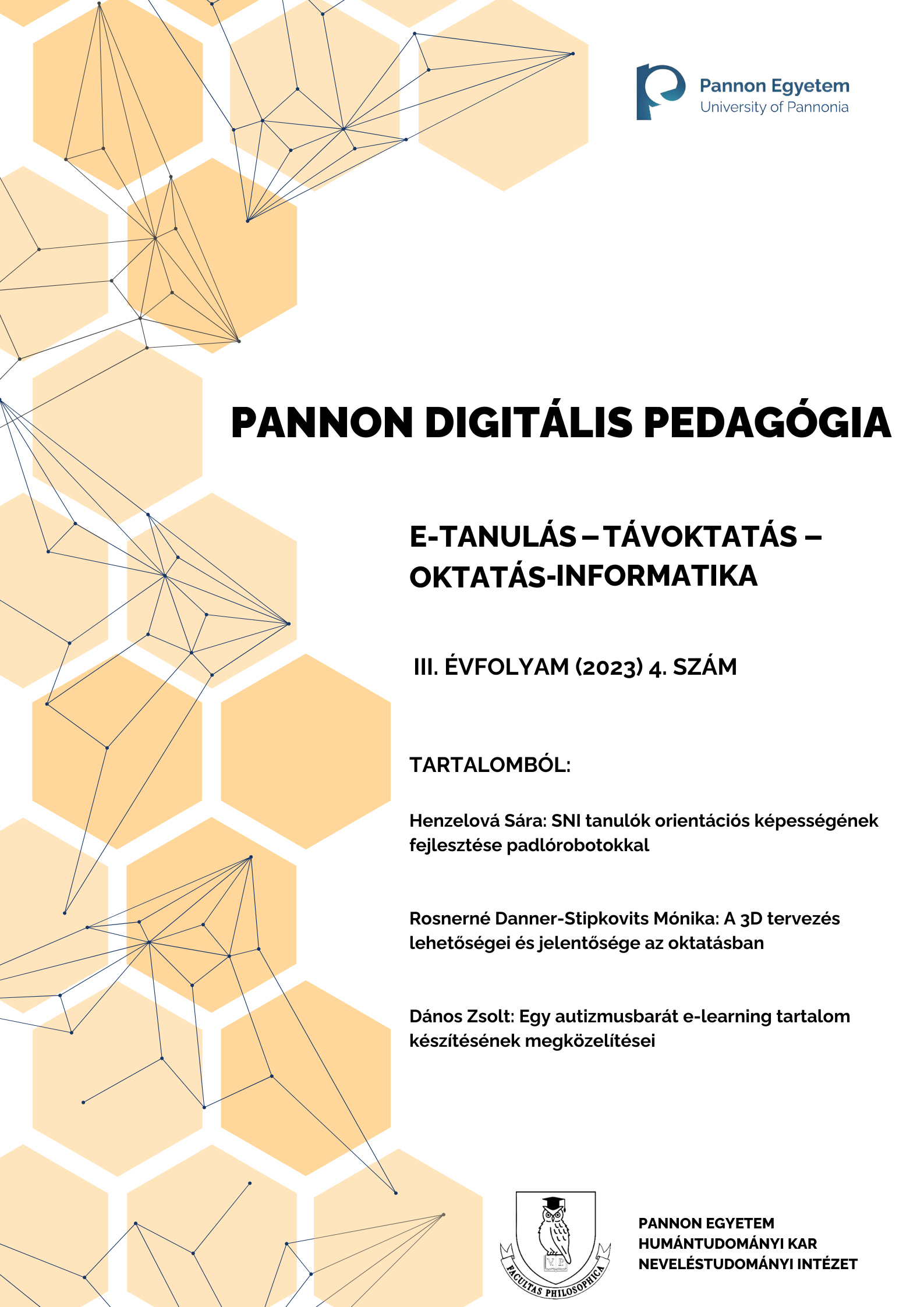The possibilities and importance of 3D design in education
DOI:
https://doi.org/10.56665/PADIPE.2023.4.3Keywords:
3D design, 3D printing, educational technology, interactive learning, pedagogical innovationAbstract
In the field of education, tools and methods are continuously evolving and developing to make learning processesmore efficient and interactive. One promising area of development is the application of 3D design and printing.The aim of this study is to provide insight into the possibilities of 3D design and printing in education. I willdemonstrate how these technologies can influence the educational process and the learning experience of students,as well as how they can help teachers and educators in better visualization and practical experience sharing. I willpresent specific examples of tasks tailored to different age groups, intended as thought-provoking and inspirationalideas for my adventurous colleagues.
References
Beke Éva (2020): Az Ipar 4.0 és az oktatás kapcsolata és kölcsönhatása. In: Műszaki Tudományos Közlemé-nyek vol. 13. (2020) 36–39. https://doi.org/10.33895/mtk-2020.13.03 (2024.04.25.)
Bocsárdi Gergő (2021): Mi is az a STEM? Hello robotika. https://www.hellorobotika.hu/mi-is-a-stem/(2024.04.25.)
Csehi Bálint–Bihari Zoltán (2021): FDM/FLM/FFF 3D nyomtatók típusainak összehasonlítása. Multidiszciplináris tudományok – Fiatal kutatók különszám, 11. kötet. (2021) 3 sz. pp. 64-69.https://doi.org/10.35925/j.multi.2021.3.8 (2024.04.25.)
Farkas Éva (2011): 3D modellezés – A modellezés „kicsit” másképp. Modellezés hírei. http://modellezes.net-work.hu/blog/modellezes-hirei/3-d-modellezes-a-modellezes-kicsit-maskepp (2024.04.25.)
Gajdács László–Szűcs Viktor Dániel (2020): A 3D-nyomtatás gyártástechnológiái, felhasználási területei,illetve az ebben rejlő potenciál. Repüléstudományi közlemények 32. évfolyam (2020) 1. szám 101–110.https://doi.org/10.32560/rk.2020.1.7 (2024.04.25.)
Horváth Ádám–Kurucz Attila (2017): A 3d nyomtatás története és jövőbeli kérdései. „Ifjúság, jövőképek”Kautz Gyula Emlékkonferencia. https://kgk.sze.hu/images/dokumentumok/kautzkiadvany2016/HorvathA_Ku-ruczA.pdf (2024.04.25.)
Komló Csaba (2021): 3D eszközök az oktatásban. Agria Média 2020. Eger, Eszterházy Károly Egyetem Lí-ceum Kiadó. pp. 342-360. https://doi.org/10.17048/AM.2020.342 (2024.04.25.)
Sudár Fanni (2021): A 3D nyomtatás hatása a művészetre. Pécsi mérnök blogoldal. https://pecsimernok.hu/a-3d-nyomtatas-hatasa-a-muveszetre/ (2024.04.25.)
Zakhar Gábor (2021): 3D nyomtatás fejlődése, jelene és jövője. Computer and Learning Vol. 4. No. 1.(2021.) 29-38. oldal http://jcal.eu/article/view/40/27 (2024.04.25.)
sz.n. (2017) Minek egy 3D nyomtató az iskolába? Digitális FABrikáló műhely. https://arsuli.word-press.com/2017/06/06/minek-a-3d-nyomtato/ (2024.04.25.)
Felhasznált weboldalak:
https://craftbot.com/casestudies/MakersRedBox
https://formlabs.com/eu/blog/what-is-selective-laser-sintering/
https://makecode.microbit.org/
https://makersredbox.com/hu/tananyagok/city-of-the-future/

